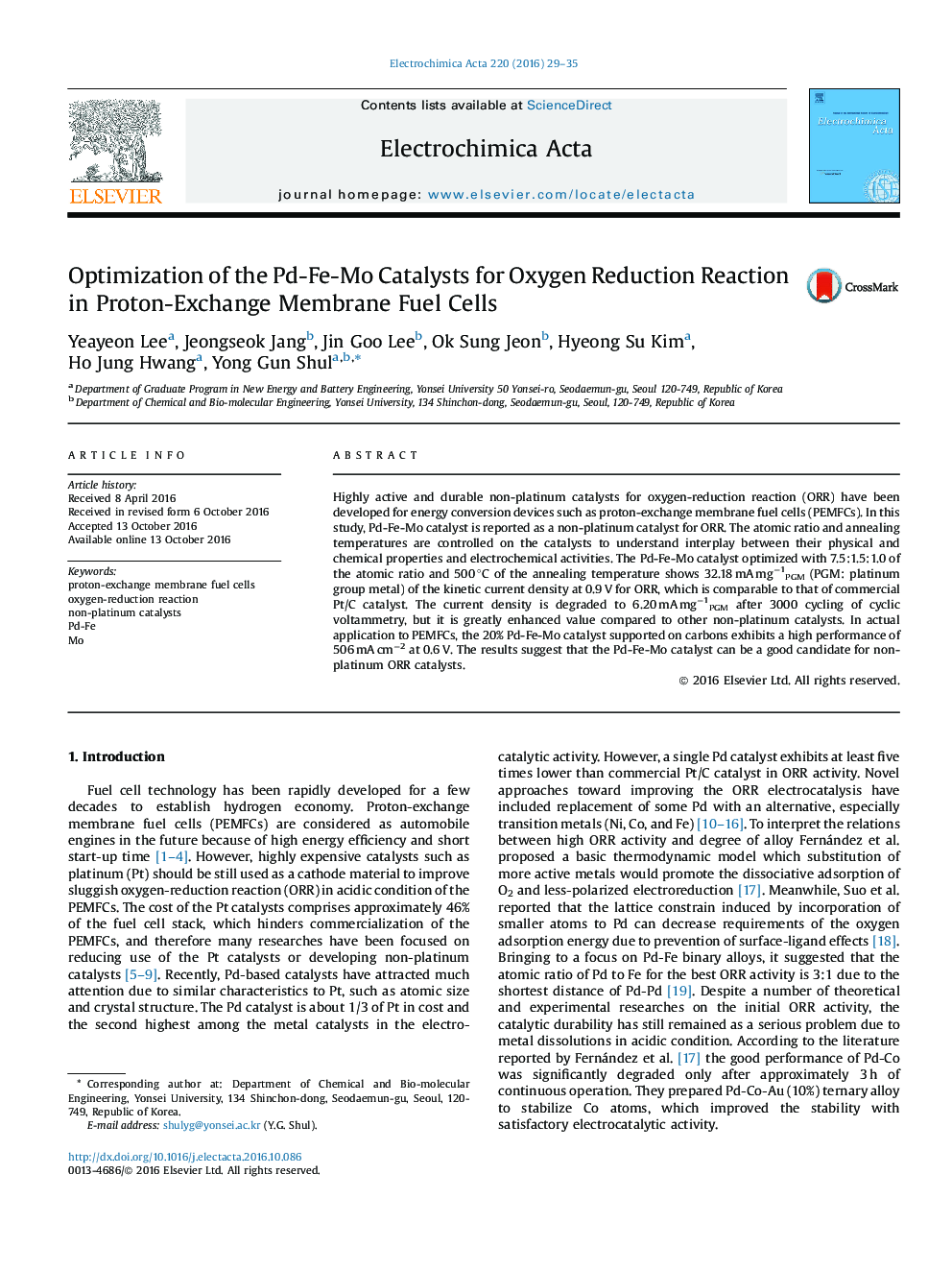| Article ID | Journal | Published Year | Pages | File Type |
|---|---|---|---|---|
| 6472273 | Electrochimica Acta | 2016 | 7 Pages |
â¢Pd-Mo-Fe catalysts show high catalytic activity and stability for oxygen-reduction reactions in acid media.â¢The optimum compositions were 7.5:1.5:1.0 for Pd-Fe-Mo, and the optimum temperatures were 500 °C.â¢The Pd-Fe-Mo catalysts were successfully applied to the PEMFC cathode, showing â¼500 mA cmâ1 at 0.6 V.â¢The lattice constant was strongly related to the activity and stability of the catalysts for oxygen-reduction reactions.
Highly active and durable non-platinum catalysts for oxygen-reduction reaction (ORR) have been developed for energy conversion devices such as proton-exchange membrane fuel cells (PEMFCs). In this study, Pd-Fe-Mo catalyst is reported as a non-platinum catalyst for ORR. The atomic ratio and annealing temperatures are controlled on the catalysts to understand interplay between their physical and chemical properties and electrochemical activities. The Pd-Fe-Mo catalyst optimized with 7.5:1.5:1.0 of the atomic ratio and 500 °C of the annealing temperature shows 32.18 mA mgâ1PGM (PGM: platinum group metal) of the kinetic current density at 0.9 V for ORR, which is comparable to that of commercial Pt/C catalyst. The current density is degraded to 6.20 mA mgâ1PGM after 3000 cycling of cyclic voltammetry, but it is greatly enhanced value compared to other non-platinum catalysts. In actual application to PEMFCs, the 20% Pd-Fe-Mo catalyst supported on carbons exhibits a high performance of 506 mA cmâ2 at 0.6 V. The results suggest that the Pd-Fe-Mo catalyst can be a good candidate for non-platinum ORR catalysts.
